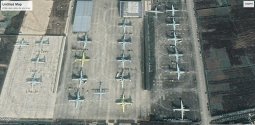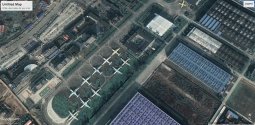You are using an out of date browser. It may not display this or other websites correctly.
You should upgrade or use an alternative browser.
You should upgrade or use an alternative browser.
Chinese Aviation Industry
- Thread starter FriedRiceNSpice
- Start date
Well well seem like they try to speed up development for CJ1000
China outlines push to develop domestic engine for C919 jet in five-year plan
Fri, March 5, 2021, 2:02 AM
BEIJING (Reuters) - China will push forward with the development of CJ1000, a turbofan jet engine designed to power the homemade C919 narrowbody aircraft, the government said on Friday in its development plan for the 2021-2025 period.
It also aims to achieve breakthrough in engine technology for widebody jets, the government said.
Chinese-made civil aircraft, including the C919, currently use foreign engines but the country has been trying to develop a home-grown alternative as it seeks to cut its dependence on foreign sources of sophisticated technology.
In 2018, the United States charged Chinese intelligence officers for a data hack to steal information on a turbo fan engine used in commercial jetliners. China denied the charges.
China's C919 plane is on track to get its airworthiness certification by the end of 2021 and deliver the first aircraft to the launch customer, Wu Guanghui, chief designer of the C919 programme, said on Friday.
China Eastern Airlines, which is the launch customer, signed a firm order on Monday to buy 5 C919 jets.
The government will also push for "exemplary operations" of C919 over the next five years, it said.
Russia, which has teamed up with China to develop the widebody jet CR929, in December flew a new passenger airliner with domestically built engines for the first time since the Soviet era.
(Reporting by Stella Qiu in Beijing and Jamie Freed in Sydney; Editing by Himani Sarkar)
The prize here isn't actually for china's domestic market (which can be covered fully by HSR maglev), but to offer a "sanction buster" to countries like Venezuela, Iran whose citizens are basically banned from flying through crippling American sanctions. The more comprehensive the stack of technologies can be provided to countries in resistance against the US, the better they can also weather the impact of sanctions, and in the process also assist china in achieving technological and resource independence. Success of C919 is a win for china, but in some ways an even bigger win for venezuela and iran.
I agree with you but lets not forget that the C919 is not a fully domestic product.The prize here isn't actually for china's domestic market (which can be covered fully by HSR maglev), but to offer a "sanction buster" to countries like Venezuela, Iran whose citizens are basically banned from flying through crippling American sanctions. The more comprehensive the stack of technologies can be provided to countries in resistance against the US, the better they can also weather the impact of sanctions, and in the process also assist china in achieving technological and resource independence. Success of C919 is a win for china, but in some ways an even bigger win for venezuela and iran.
It still uses foreign suppliers so even after building a domestic engine in the future the airplane will still be able to be sanctioned.
I see this as more of a longer term effort to gradually replace foreign suppliers and then offer it to other countries actively resisting the US
I had not seen this article before. It is dated September 2020.
It basically states the Canadian government is still blocking the sale of the PW150C engines for the Xian MA700. Pratt & Whitney Canada says it asked for the export license two years ago and the time for the government to grant a license is typically 40 days. The order is supposedly worth some $2.4 billion USD.
I also found this article from January 2021.
It basically states Xian got added then into the US entity list which means supply of US components is cut. The MA700 uses a lot of those like the APU, propellers, avionics, etc.
It basically states the Canadian government is still blocking the sale of the PW150C engines for the Xian MA700. Pratt & Whitney Canada says it asked for the export license two years ago and the time for the government to grant a license is typically 40 days. The order is supposedly worth some $2.4 billion USD.
I also found this article from January 2021.
It basically states Xian got added then into the US entity list which means supply of US components is cut. The MA700 uses a lot of those like the APU, propellers, avionics, etc.
Last edited:
Here is a picture of the Xian MA700 prototype airframe. March 2020.

Is this the static or the flying prototype?
Is this the static or the flying prototype?
I read conflicting reports on that.
Most reports say this is a static prototype.
After I posted this picture here I noticed you already had published this picture on Twitter last year. Sorry.
Totally agreed. The purpose of the C919 is not for China to achieve aviation independence, but to take the steps towards aviation independence. The priority is to develop indigenous components to replace american ones, then european ones, then japanese ones, in that order. This is not a sprint, but rather a marathon.I agree with you but lets not forget that the C919 is not a fully domestic product.
It still uses foreign suppliers so even after building a domestic engine in the future the airplane will still be able to be sanctioned.
I see this as more of a longer term effort to gradually replace foreign suppliers and then offer it to other countries actively resisting the US



